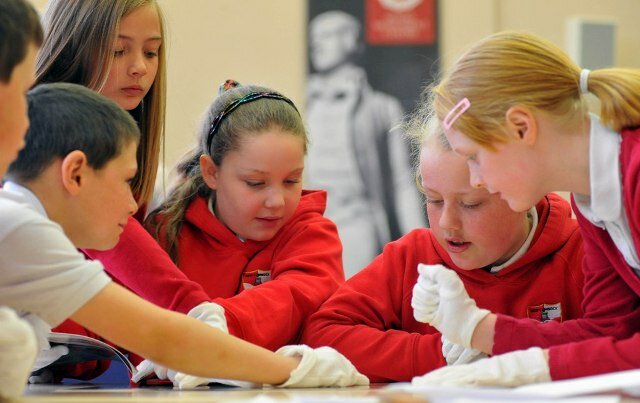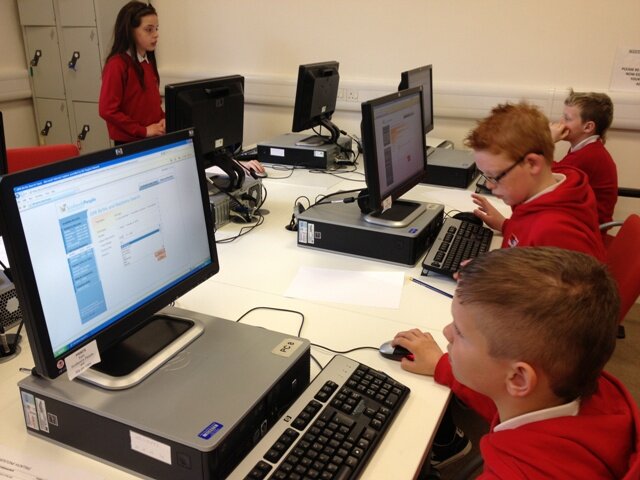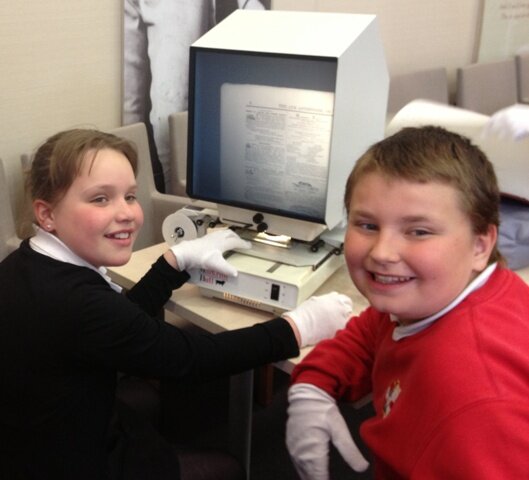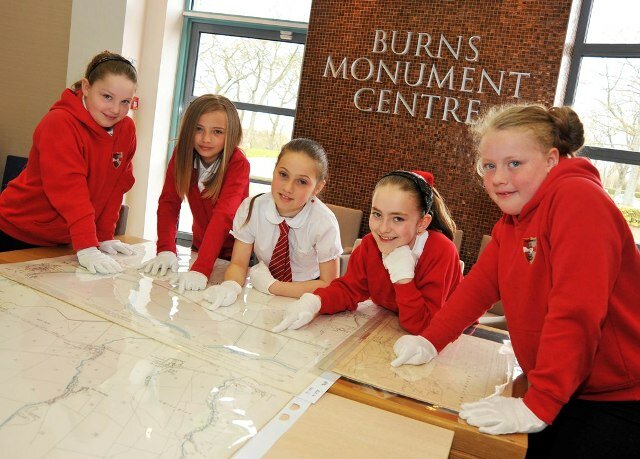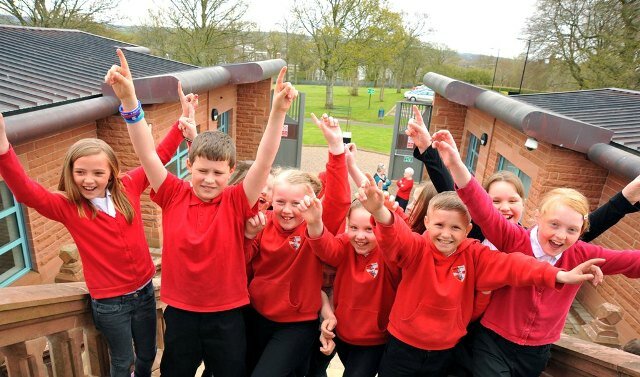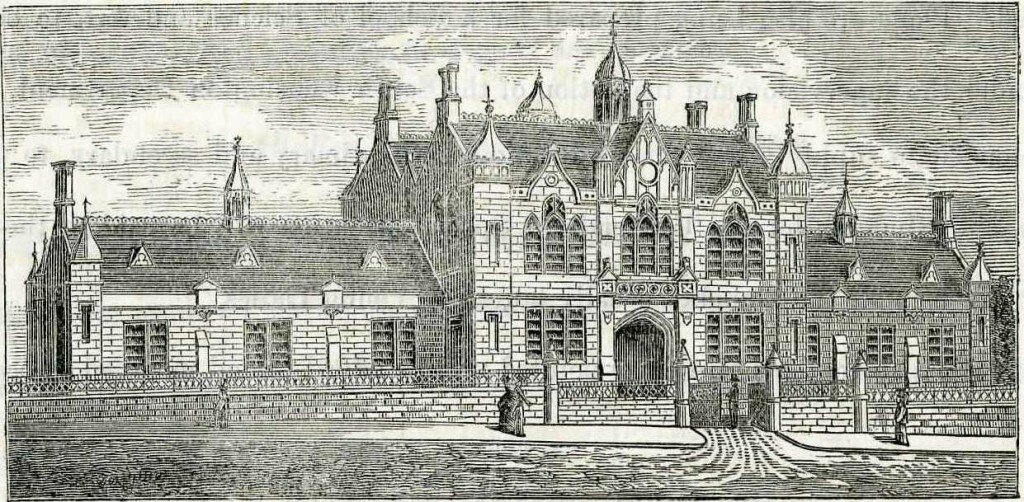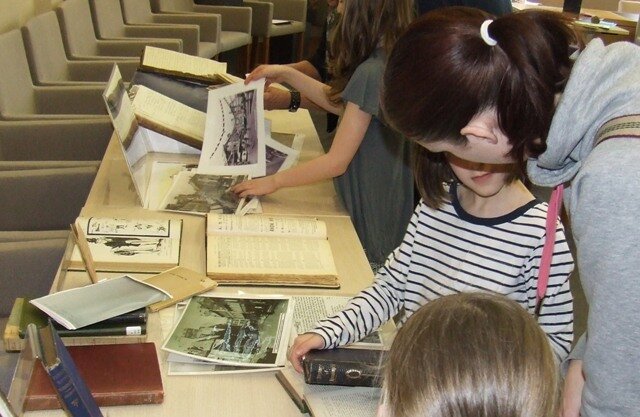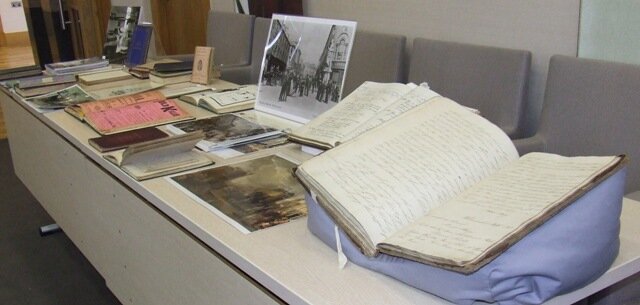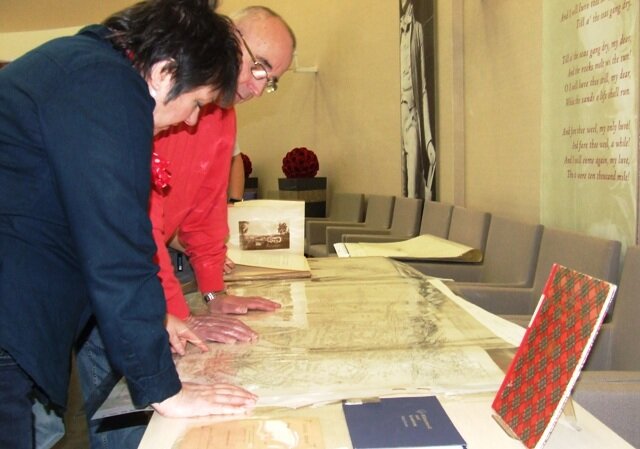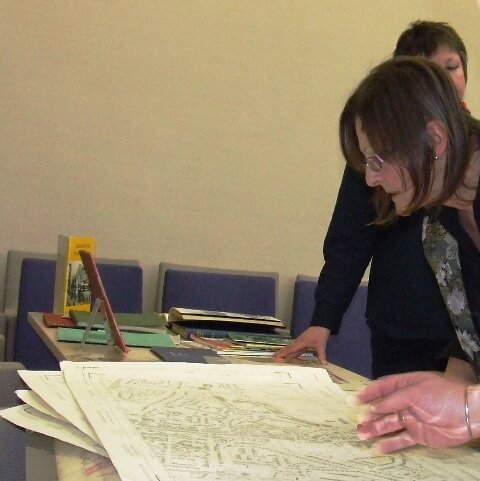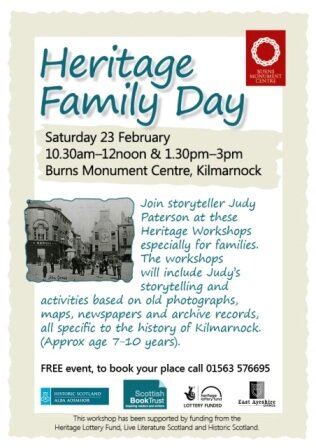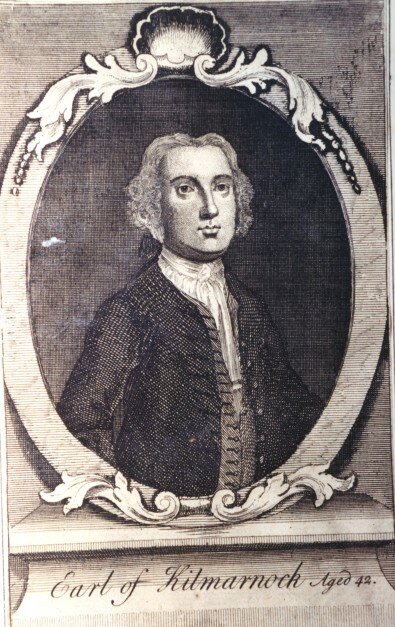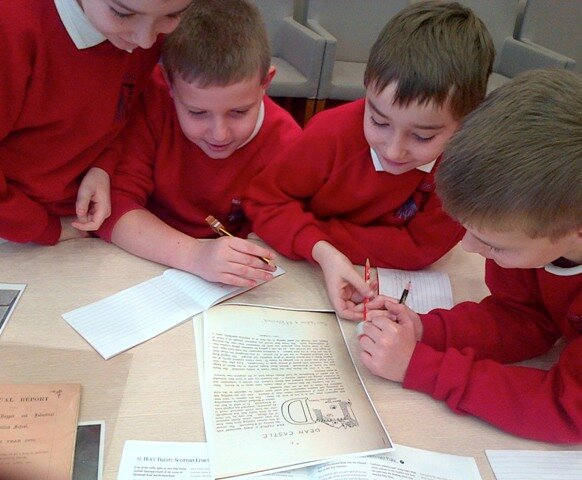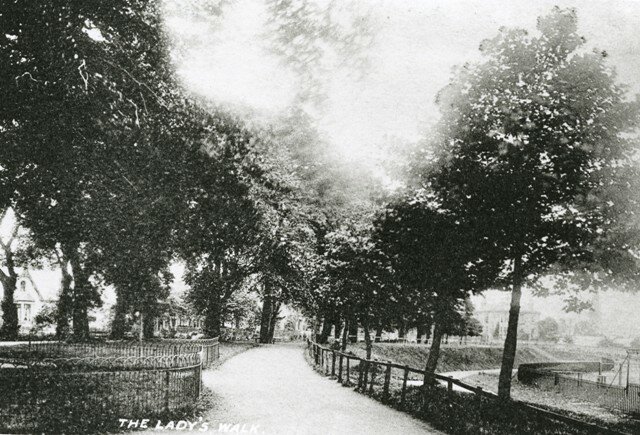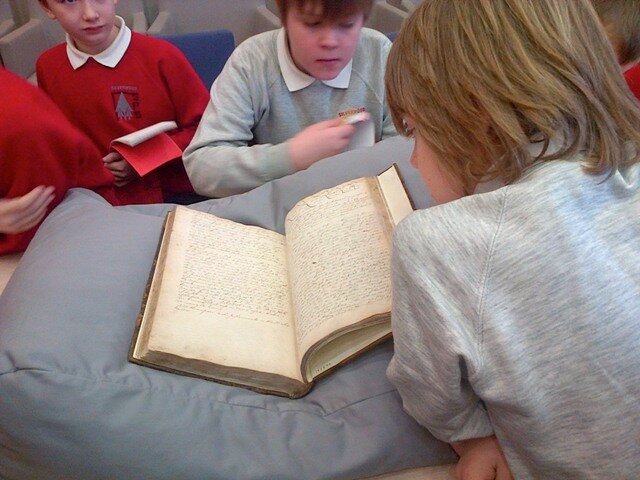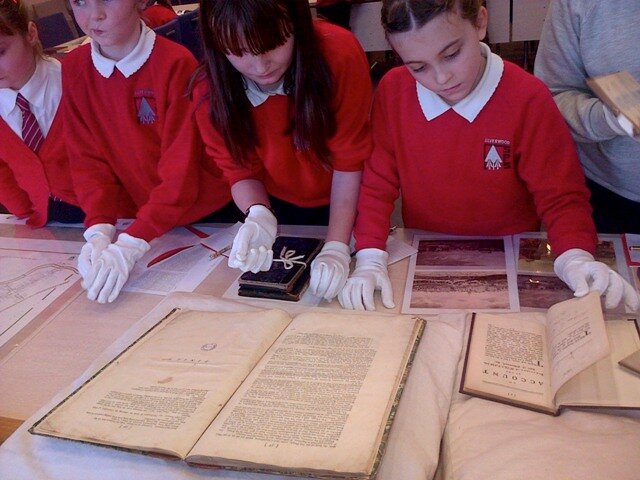Last week we had the pleasure of welcoming New Cumnock Primary School’s P6 class to the Centre, to research the people and places connected to New Cumnock’s Auld Kirk. The class project is part of the New Cumnock Auld Kirk & Village Heritage Trail. The class has already been out and about in the Auld Kirkyard, gathering names of people buried there many years ago, with their teacher Miss Smith and project leader Bobby Guthrie.
They came along to the Burns Monument Centre to find out more about some of the prominent local people with lairs in the Auld Kirk, such as teacher Andrew Stirling, Reverend James Young, and the merchant Thomas Kirkland. With expert guidance from the Centre’s Registrars, the pupils were able to search Scotland’s People. They found information about these New Cumnock families from Birth, Death and Marriage Records, Census Records, and Old Parish Records.
To find out as much as possible about New Cumnock’s past, the pupils were also keen to look at maps, photographs and archive records of the area. The archivist showed the class some wonderful records, for example the New Cumnock Baptismal Register (1796 – 1846), a New Cumnock Public School logbook from the 1870s, Ayr Presbytery records showing Rev. Young’s ordination in 1758, and New Cumnock Poor Relief records.
Photographs, maps and newspapers help us build a vivid picture of a place. The pupils enjoyed browsing through the old Ayrshire newspapers on microfilm. They were also keen to compare New Cumnock of today with the village in the photographs of the 19th century. Maps were also helpful to look at the development of the village over the years, and to compare streets and landmarks with the village in 2013.
To make the most of their visit the pupils were given a special tour of the building, giving them an idea of how it is used on a daily basis, for registration, archives, local and family history. They were also keen to find out about the history of the Burns Monument itself and even managed to squeeze in our outdoor quiz. It was a busy day!
There’s another nice story about the visit on the East Ayrshire Council website.
(Thanks to EAC and Miss Smith at New Cumnock Primary School for the great photos!)
